Why invent any new method of contraception. It has already been invented and does its job well.
And this tool is called a spiral, which is a special device that does not allow sperm to move on and fertilize the egg.
In this article, we will look at how the spiral affects a woman's health, which should be considered if she chooses this remedy.
We insert a spiral
If a woman has recently given birth or done, then she cannot immediately insert a spiral from pregnancy, some time must pass.
Only a gynecologist can perform this procedure. After it, pregnancy is impossible, since the fetal egg has nowhere to attach.
In the process of attaching the spiral, the woman does not feel any discomfort, it can be inserted in just 10 minutes. But sometimes doctors prefer to give local anesthesia to carry out this process.
This contraceptive is usually installed on certain days - at the end of menstruation. It is important to be sure that conception has not occurred, and on such days it is almost impossible.
In addition, these days the coil is the easiest to insert, since the cervix opens slightly and the coil enters there easily. But you can perform this procedure on any day, but then the introduction of the spiral can be a little painful.
The spiral prevents the onset, but, unfortunately, not by 100 percent, but by 98. For five years, you can not be afraid that pregnancy will occur.
After the anti-pregnancy coil is introduced, it is necessary to visit the gynecologist in a month to carry out a check.
From now on, a woman may not worry that she will become pregnant., not this in advance. But every 6 months it is necessary to do a spiral check to avoid negative consequences. After its removal, conception can occur.
But if any mistakes were made during the introduction of the spiral, then further pregnancy may be in question. It happens, but rarely. The more professional the gynecologist, the less you can fear for your health.
You can pick up a high quality spiral, but if you insert it incorrectly, then the whole effect may come to naught. There are cases when, by inserting a spiral, the doctor pierces the uterus.
When the spiral is inserted incorrectly, the woman feels uncomfortable, this does not happen if everything is done accurately.
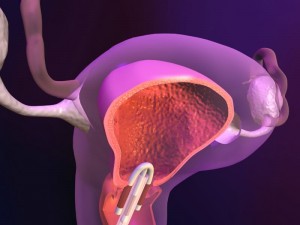
Choosing a spiral
For many, there is no difference in spirals. If you look at what the anti-pregnancy spiral looks like, you are unlikely to find any differences in them.
Their appearance resembles the letter "T". The base is made of plastic and a special substance barium sulfate, which allows you to highlight the spiral during the procedure.
For the manufacture of the spiral frame, elastic plastic is taken, on which copper or silver wire is wound. The most popular is considered a spiral with a copper edging.
Why choose copper? The fact is that this metal creates an acidic environment that kills sperm. Spirals with silver are more effective.
But the spiral is not always braided with metals, sometimes it is impregnated synthetic hormones, which make the uterine mucus so soft that the egg simply cannot reach the fetal egg and attach to it.
Consider which spirals are more popular today.
Mirena
The rod contains levonorgestrel, which is released into the uterus in small doses, thus preventing the development of pregnancy.
To date, this is the most effective remedy for conception.. It also helps to cure or fibroids. Unfortunately, such a remedy can lead to polycystic disease, which is its only drawback.
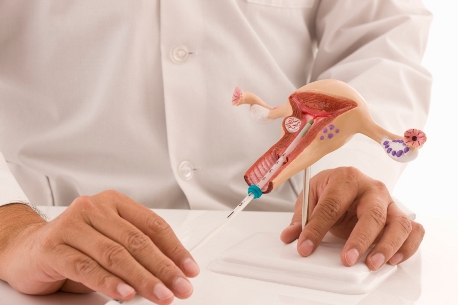
Multiload
Such a spiral does not have a standard T-shape, but an oval one. To prevent this device from falling out, it is made with spikes. \
The plastic surface has a copper coating that negates the activity of spermatozoa and prevents the uterus from attaching.
Such a spiral can lead to an increase in the menstrual cycle and pain where it is attached. A woman with such a spiral is not recommended to take antidepressants that reduce contraceptive effect.
Navy Nova T Cu
Standard T shape, made of plastic and plated with copper. The tip of such a spiral is coated with silver, barium sulfate and other substances that prevent pregnancy for 5 years.
You can remove this device with a thread that is placed directly on the tip. The disadvantage of this device is the possibility of an ectopic pregnancy.
Navy T-Copper Cu 380 A
The T-frame is made of flexible polyethylene coated with copper and barium sulfate, which inhibit the action of spermatozoa and prevent the egg from being fertilized.
Most suitable for women who have given birth. When introducing such a spiral, it is not recommended to carry out any thermal procedures, since some of its fragments may heat up.
Navy T de Oro 375 Gold
Gold is added to this type of spiral, which is produced in the shape of a horseshoe or the letter U. That is why it is so expensive.
But on the other hand, uterine inflammations are excluded when using this spiral. As a result of the use of this spiral, the menstrual cycle may increase.
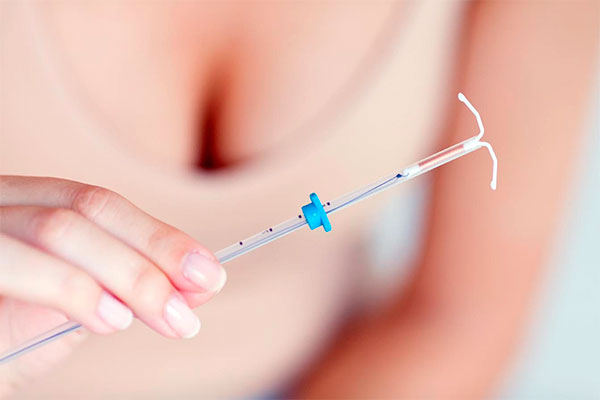
The consequences of the introduction of the spiral
The coil is designed to prevent a woman from becoming pregnant if she does not want to, but it does not prevent the development of sexually transmitted diseases.
Moreover, in some cases, it can even contribute to the development of sexually transmitted infections, since they penetrate faster into the unopened body of the uterus. Such a contraceptive may not be suitable for all women.
Before inserting it, the doctor must make sure that there are no contraindications. The ultrasound procedure and others will determine if a woman is suitable for a spiral or if she needs to choose some other method of contraception.
This procedure can only be carried out in special clinics. where qualified medical personnel work. After the spiral female body may not function as well as before.
For starters, the menstrual cycle can change, it can increase significantly. Special hemostatic drugs will help get rid of discomfort, but if they do not help, then you will have to remove this contraceptive.

Those women who have never given birth to a child in their lives experience more discomfort after the introduction of the spiral. At the very beginning of wearing the helix, they may either start bleeding, but later it passes. Rarely does the spiral fall out of the uterine cavity.
When should you not insert a spiral?
When a woman is in position, the spiral should never be inserted. And if pregnancy occurs after the introduction of the spiral, then doctors advise to interrupt it. In any case, the coil causes an abortion and when it is removed, a miscarriage occurs.
In case of ovarian cancer and other diseases of the genital organs, the spiral is not inserted, as it can further aggravate the situation. Before inserting the spiral, the doctor appoints the woman to undergo an examination, and only on the basis of the tests, he selects the most suitable conservative remedy.
When choosing them, you need to find out how much the spiral from pregnancy costs in order to correctly calculate the budget. After the introduction of the spiral, various side effects may occur. Sometimes the case is limited only to bleeding. But in some cases, the cervix is injured from this.
In very rare cases, perforation of the uterus occurs. In the worst case, a woman is waiting. Unfortunately, the risk of ectopic pregnancy with the use of this remedy is increased by 4 times.
Women who are allergic to copper should not use a coil that contains this substance. When lifting weights, the coil can break.
Signs of this are severe cramping pains in the abdomen and an elevated body. I must say that side effects are quite rare, so women prefer to use this particular method of contraception.

In any case, to introduce a spiral or not, the doctor decides, and not the woman herself. This will avoid any unwanted consequences.
The insertion of the coil can affect the endometrium, which in turn can cause bleeding in the uterus. Inflammatory processes may accompany the introduction of the spiral and this fact cannot be ignored. After the introduction of the spiral, it is necessary to regularly undergo an examination by a gynecologist.
If a woman notices that there is no thread to remove it, then most likely the spiral has moved and it is necessary to urgently consult a doctor to fix it.
Women who have not given birth should also take this contraceptive with caution, as it may subsequently interfere with the birth of a child. The fact is that the endometrium in the uterus can be depleted.
This can interfere with the normal development of pregnancy. Don't use data contraceptive people who have not reached puberty.
Why insert a spiral?
- Just one trip to the doctor and a woman will not have to worry about an unwanted pregnancy for a long period of time. This tool will be valid for 5 years, and in some cases 6 years.
- This tool is suitable for both girls and mature women.
- Considered the most effective tool contraception.
- After removing the spiral, you can plan a pregnancy, which can occur a month after removing this.
- A woman does not need to ask her partner to use contraception.
- There is no need to spend money on pills or condoms and do some additional manipulations so as not to get pregnant. If we compare how much it costs to put a spiral from pregnancy and the required amount for others contraceptives, then, undoubtedly, the first method will cost the least.
- Sexual life with the presence of a spiral is not limited in any way.
- A woman does not experience any discomfort while wearing a spiral and may not worry that she will develop any extragenital disease. A woman will not experience problems such as rapid weight gain or headaches, as occurs when taking birth control pills.
- The contraceptive effect is not affected by the use of other medications.
- The cost of the spiral is not so high, a woman of any income can afford it.
- Some types of spirals healing effect. This is provided by components such as silver ions and some hormonal ingredients.
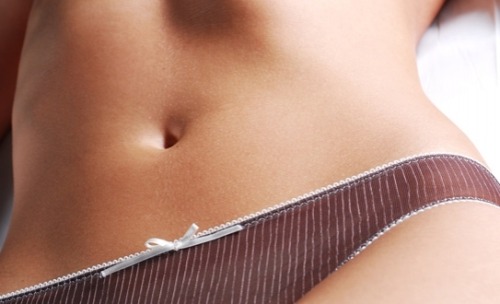
Intrauterine device after childbirth
If a woman who has recently given birth does not want to be in the same position again so quickly, then she should take care of contraception. In any case, it is not recommended to start sexual activity immediately after childbirth, it is necessary to wait 6–8 weeks, when the postpartum period ends and the internal organs recover.
An intrauterine device for women from pregnancy after childbirth will be perhaps the most the best remedy contraception, especially if she is breastfeeding. This will not affect her lactation and the health of her baby in any way.
The spiral will protect a woman from unwanted pregnancy for five years. 6 weeks after giving birth, you can carry out this procedure and not be afraid to get pregnant quickly. But the spiral can be inserted only if it does not threaten health.
With the pathological structure of the uterus, the spiral is prohibited. Any inflammation, fibroids make it impossible to use this method of contraception. If a woman gives birth to a child through caesarean section, then she needs to wait 6 months to insert the spiral.

Outcome
Only a doctor can determine whether this contraceptive is indicated for a particular woman. With the right spiral, you can not only avoid unwanted pregnancy, but also improve your health.
After the introduction of the spiral, it is necessary to undergo regular examinations with a gynecologist to make sure that everything is in order. By following all the doctor's recommendations, a woman can avoid unpleasant consequences and, after removing the spiral, immediately plan a pregnancy.
Intrauterine device pretty easy to use. It is installed by a gynecologist, this manipulation usually does not cause any difficulties. Contraceptive action starts immediately after installation. If a woman decides to conceive a child, then this issue can be dealt with immediately after removing the intrauterine device. Another significant advantage of the IUD is a long period of validity - up to six years.
The advantages of the contraceptive spiral include the fact that the new generation of contraceptives are designed so that neither a woman nor a man feel them, and they do not affect the quality of sexual intercourse. The only thing a woman should do is to be examined by her gynecologist once every six months. There are intrauterine devices containing hormones that have a positive effect on the body: they reduce menstrual pain and prevent the development inflammatory diseases(pelvic organs). Such a spiral does not affect weight gain, does not contribute to a change blood pressure.
How does an intrauterine device work
The contraceptive coil affects the ability of sperm to move through the cervix. It prevents the implantation of the egg in the walls of the uterus. Progestin-containing coils prevent ovulation. A spiral containing copper has a detrimental effect not only on spermatozoa, but also on the egg. Efficiency this tool contraception is quite high due to the summation of different mechanisms of action and is about 90%.
Introduction of the spiral
Recommended the introduction of an intrauterine device on the second to eighth day of the menstrual cycle in conditions medical institution. During this period, the mucous membrane is the least vulnerable, and the cervical canal is ajar. This makes the insertion of the IUD safe and less traumatic. Before installing the spiral, a vaginal examination is mandatory, as well as probing the uterine cavity. An experienced gynecologist exposes the cervix with the help of mirrors, then treats it with an antiseptic, anesthetizes if necessary. For the introduction of the spiral, a special conductor is used, through which the contraceptive is inserted with caution. After installing the IUD, the conductor is removed, and the threads are cut off.
Possible Complications
In some cases, complications may occur after the introduction of an intrauterine device. The most common complication is infection, the development of local inflammation on the cervix, fallopian tubes or the uterus itself. This situation occurs with insufficient observance of antiseptic measures, as well as if a woman suffers from one or another chronic disease. The main symptoms of inflammation: severe pain in the lower abdomen and genital area, discoloration of the discharge, fever. Infectious complications require treatment with antibiotics, hospitalization is possible.
Perforation of the uterine wall is another rather serious, but rare complication with the introduction of an intrauterine device. During the insertion of the IUD, there may be no symptoms at all. They appear later, include pulling pains in the abdomen, as well as bleeding from the genital tract (in severe cases, symptoms of peritonitis are observed).
Contraindications
There are a number of contraindications to the use of the contraceptive spiral:
- cervical erosion;
- scars on the uterus after childbirth;
- uterine bleeding;
- violation of blood clotting;
- malignant neoplasms in the uterus;
- chronic infections of the internal genital organs;
- suspicion of pregnancy;
- Allergy to the components of the spiral.
The intrauterine device (IUD) is one of the most common ways to prevent unwanted pregnancies. And this is not surprising, because the reliability of this method of contraception is more than 95%.
According to WHO, about 75 million women currently prefer the IUD because of its effectiveness and safety. But the installation of a spiral is an intervention in the body, so this procedure certainly has its pros and cons, which are worth studying before using it.
What is an intrauterine device (IUD)
An intrauterine device is a small plastic and metal device that is inserted into a woman's uterus to protect against an unwanted pregnancy. Silver or copper, which is covered with a spiral, protect the uterine cavity from infection and enhance the contraceptive effect.
There are many different types of intrauterine devices that differ in size, shape, materials, for example: a loop, a spiral, a T-shaped, a ring, a horseshoe, etc. The T-shaped IUD is currently the most common. It prevents sperm from entering the uterus by contracting and prevents the attachment of a fertilized egg to the uterine endometrium.
They also produce hormonal intrauterine devices, which combine the advantages of oral and intrauterine contraception. Instructions for use are attached to any intrauterine device. Only a doctor can pick up, install, and also remove a spiral from the uterine cavity. The IUD can be worn up to 10 years, but usually it is put on for 3-4 years. Most often, gynecologists recommend women such spirals as Mirena, Multiload, Nova T.
How does an intrauterine device (IUD) work?
The principle of operation of the intrauterine device is to prevent the implantation and development of the embryo in the uterus. The spiral creates the effect of the presence of a foreign body that prevents sperm from entering the uterine cavity and fertilizing the egg. If fertilization has occurred, the spiral makes it impossible for the egg to attach to the uterine endometrium.
Which spiral is better and how to choose the right IUD, only the doctor decides, taking into account the individual characteristics of your body. After the introduction of the spiral into the uterine cavity, it begins its work immediately. The contraceptive effect of the IUD is based on the following mechanisms of action:
- abortive effect
The spiral increases the tone of the uterine muscles, preventing the attachment of a fertilized egg. It also enhances the peristalsis of the fallopian tubes, in connection with which the fertilized egg has time to enter the uterus when the endometrium is not yet ready for this. If fertilization does occur, the pregnancy will be terminated by spontaneous miscarriage at an early stage.
- effect of aseptic inflammation
After the introduction of the spiral, leukocytes begin to rise in the uterus, perceiving it as a foreign body. Leukocyte infiltration of the endometrium makes implantation of the egg impossible. In addition, leukocytes and macrophages enhance the process of absorption of spermatozoa, providing an even more pronounced contraceptive effect.
- effect of creating enzyme disorders
The intrauterine device changes the composition of enzymes in the endometrium of the uterus and creates unfavorable conditions for fertilization in it.
- the effect of preventing the penetration of spermatozoa into the uterine cavity
The ends of the threads of the intrauterine device make it difficult for sperm to enter the cervical canal. In the hormonal coils in the cervix, mucus also thickens.
- ovulation inhibition effect
The spiral creates the conditions for blocking ovulation by influencing the hypothalamic-pituitary system.
Installation of an intrauterine device
An intrauterine device can be installed in women who have given birth after an abortion, if the abortion has passed without inflammatory complications, in women who have given birth after 35 years of age, who have contraindications to admission, in women with a low risk of genital tract infections in the absence of cervical pathologies.
The procedure for inserting a spiral into the uterine cavity is a medical intervention that requires some preparation. Before installing a spiral, a woman should be well examined and cured of all chronic gynecological diseases.
Examination before the installation of the IUD includes:
- consultation with a doctor to collect an anamnesis of the patient;
- gynecological examination to determine the size and position of the uterus;
- Ultrasound of the pelvic organs to exclude formations and inflammatory processes in the uterine cavity and its appendages;
- clinical blood and urine tests;
- blood tests for HIV,;
- delivery of smears for cytology, microflora from 3 points, bakposev of the discharged vagina and cervix;

Immediately before the insertion of the IUD, the gynecologist should probe the uterus and measure the length and distance between the uterine angles. The spiral is inserted on the 3rd-4th day of menstruation, since during the critical days the cervix is ajar, which facilitates the introduction of the IUD. Also, the blood released during menstruation reduces the risk of trauma to the uterus and means no pregnancy at the time of the installation of the spiral.
Slight pain in the lower abdomen after the introduction of the spiral and spotting is the norm, this is just a reaction of the uterus to the introduction of a foreign body. In the early days, the patient is not recommended physical activity. Sex life after the installation of the IUD can begin in 1-2 weeks, depending on how you feel.
In the first few months after the installation of the spiral, spotting may appear. If the coil is installed correctly, neither the woman nor her sexual partner should feel it. A medical examination after the introduction of the spiral must be done first once a month, then every three months and then every six months.
Side effects after IUD insertion
Side effects after the installation of the spiral in the uterine cavity occur infrequently. Modern technologies for the manufacture of intrauterine devices reduce the risk of their occurrence to a minimum. But nevertheless, you need to see a doctor after the introduction of the spiral, if you have:
- profuse bleeding;
- suspicion of pregnancy;
- pain or bleeding during intercourse;
- there were symptoms of infection (unusual vaginal discharge, itching, burning, unpleasant odor);
- the threads from the spiral shortened or lengthened
Contraindications for IUD insertion
- pregnancy;
- in past;
- acute or chronic inflammatory processes of the genital organs;
- anomaly in the structure of the uterus;
- formations in the uterine cavity;
- uterine bleeding;
- anemia;
- blood clotting disorder;
- endocrine diseases (, problems with the thyroid gland)
Pros and cons of the intrauterine device
Advantages of the intrauterine device
The most important advantage of using the IUD is long-term protection against unwanted pregnancy (for a period of 3 to 10 years, depending on the type of spiral). The contraceptive effect occurs immediately after the device is installed. The spiral protection method is very effective, the protection rate reaches 98%.
The spiral is easy to install and this process is reversible, i.e. at the request of the patient, the spiral can be removed at any time at the request of the woman. Pregnancy after the removal of the spiral usually occurs after several cycles, and sometimes even in the first menstrual cycle, fertility is restored fairly quickly.
IUD contraception gives a woman the opportunity to make her own decisions about planning children. The sexual partner will not be able to find out about the presence of a spiral in a woman's body, since it is not felt. Additional precautions for the IUD are not required. The spiral has no effect on general state women, does not worsen the course of extragenital diseases.
The convenience of using the IUD is that it does not need daily monitoring, as, for example, with birth control pills. Installed and forgotten for several years. Other medicines and drugs do not affect the contraceptive effect of the IUD. In the presence of a spiral, any surgical manipulations can also be carried out. The spiral is not contraindicated in lactation.
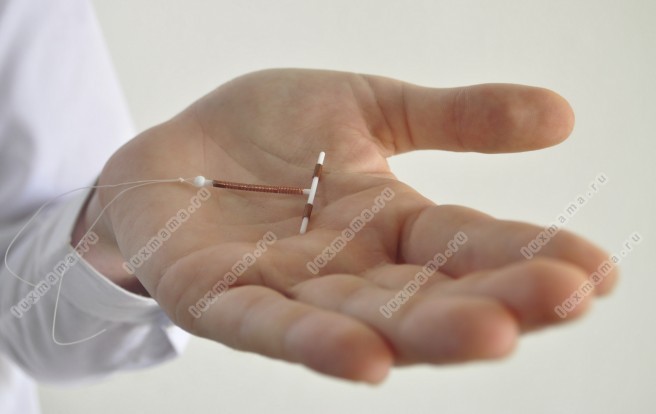
The price of installing an intrauterine device varies depending on the type of device and the chosen clinic, but in general, this method of protection is available to all segments of the population. In some women's consultations spirals are installed for women completely free of charge. Reception oral contraceptives sometimes it costs a lot more.
Cons of the intrauterine device
Perhaps the main disadvantage of using the IUD is that after the introduction of the helix, the cervix remains ajar, which is fraught with the penetration of pathogenic microorganisms into it. This, in turn, can cause an inflammatory process in the small pelvis: the uterus () and its appendages (), even though the spiral is made of a metal that has a disinfecting effect.
For the first few months of using the IUD, a woman may feel aching pain lower abdomen. The cause of pain after the installation of the IUD is either an increased sensitivity of the uterus, or an incorrectly selected type of spiral. The presence of a foreign object in the uterus, as well as permanent mechanical damage to the endometrium of the uterus at the point of contact with the spiral, prolongs menstruation and the amount of menstrual flow. In rare cases, this is fraught with anemia.
Unfortunately, sometimes when using the IUD, an ectopic pregnancy can occur - a condition when a fertilized egg is attached not in the uterus, where it should be, but in the fallopian tubes. The consequences of an ectopic pregnancy are extremely dangerous, even fatal, if the pregnancy was not detected early.
When a spiral is inserted into the uterine cavity, the uterine endometrium becomes thinner, which adversely affects the possibility of becoming pregnant in the future and increases the risk of spontaneous miscarriages. Any anomalies in the structure of the genital organs of a woman are a contraindication for the installation of a spiral, since one hundred percent protection against pregnancy cannot be guaranteed.
Another significant drawback of the IUD is the likelihood of the spiral falling out. This usually happens during critical days. Since the loss of the spiral is extremely rare for a woman, it is possible unwanted pregnancy. The intrauterine device does not protect against genital infections, so it is a method of contraception, but with dubious partners, additional protection with condoms should be used.
The spiral is placed only in women who have already given birth, respectively, as a method of contraception, not everyone is suitable. It is absolutely impossible not to insert or pull out the spiral on your own. All manipulations with the intrauterine device should be carried out only by a specialist. Once every six months, a woman is recommended to be examined by a gynecologist for preventive purposes.
Thus, the intrauterine device as a method of protection may not be suitable for every woman, since there are a number of contraindications and serious side effects when using it. Therefore, the choice and installation of the IUD requires careful preparation and consultation of a qualified doctor.
What is the basis of the action of non-hormonal contraceptive pills. Their advantages are presented. The properties of the contraceptive pills Pharmatex, Ginakotex, Traceptin, Conceptrol, Patentex Oval are described.
The article "Intercourse Frequency for Successful Conception" discusses how often you need to have sex when conceiving a child. Recommendations are given to improve the quality of sperm and factors that negatively affect male sperm are listed.
How to get pregnant after an ectopic pregnancy, if you managed to save both fallopian tubes or one tube remained. When to plan a new pregnancy.
Comments
Violet March 12
Girls, I really want to put myself a spiral (tired of shaking every month - will they come for a month or not), because. preziki, suppositories and pills are terribly tired.
I would like to hear the opinion of those who have already put an IUD on themselves - are there any discomfort, pain, etc. I read that her periods are more "painful" and plentiful ...
Tell me plz.
Previously, women did not know how to protect themselves and avoid unwanted pregnancies - in our time, everything has changed. Today the market offers a wide range of contraceptives. You can choose the right tool for yourself, based on your taste preferences and financial capabilities.
In order to make the right choice, you should familiarize yourself with the most popular means of protection, deal with their advantages and disadvantages. After you are armed with all necessary information and discuss everything with your partner, it will be easier for you to find the right contraceptive and make your choice.
So, today we will talk about contraceptive coils. If you do not want to poison yourself with hormones and do not like condoms, this contraceptive can be a good help for you.
 Today, intrauterine contraception is very popular among women. Statistics show that over seventy percent women successfully uses contraceptive spirals. For the first time, such a method was proposed by the German gynecologist R. Richter in 1909 - he argued that if a ring of silk threads is inserted into the uterine cavity, a woman will not become pregnant.
Today, intrauterine contraception is very popular among women. Statistics show that over seventy percent women successfully uses contraceptive spirals. For the first time, such a method was proposed by the German gynecologist R. Richter in 1909 - he argued that if a ring of silk threads is inserted into the uterine cavity, a woman will not become pregnant.
This is the first page of the official history of intrauterine contraception. After some time, plastic contraceptive spirals appeared on sale - this was in the sixties. It was after this moment that the fair sex drew attention to this contraceptive and began to actively use it!
Specialists constantly improved spirals - every year they became more reliable and efficient. If speak about modern spirals, then today they contain copper, gold or silver. Also on sale are hormonal spirals.
How does the contraceptive coil work?
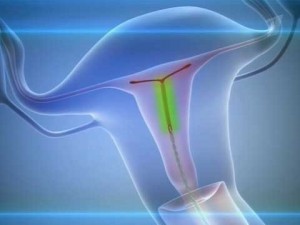 The spiral consists of two horizontally located flexible hangers, legs with copper wire and a thread for extraction. This is how the most common T-shaped contraceptive (intrauterine) spiral. This universal remedy does not allow the uterus to close.
The spiral consists of two horizontally located flexible hangers, legs with copper wire and a thread for extraction. This is how the most common T-shaped contraceptive (intrauterine) spiral. This universal remedy does not allow the uterus to close.
Usually the coil is inserted into the uterine cavity on the second or third day of the menstrual cycle. Usually it is set for several years. Five years is the maximum. After this time contraceptive coil need to be taken out. If desired, you can put a new coil during the next menstrual cycle.
As mentioned above, the most popular T-shaped spiral. It is reliable, efficient and easy to use. You may also prefer annular contraceptive coil or spirals in the form of a loop or umbrella.
Experts recommend using the spiral as a means of contraception for women who have already given birth. Despite the fact that today you can find coils for nulliparous, we still do not recommend that you put a coil before the first birth. Statistics show that after the removal of the spiral, the risk of infertility may increase.
Women's health requires a reverent attitude.
Doctors are increasingly advising the fair sex to pay attention to hormonal spirals. Such spirals contain hormones that evenly enter the female body for three to five years. With this type of spiral, you will reduce the risk of infection. If we talk about the contraceptive effect, then it will undoubtedly be better and more reliable!
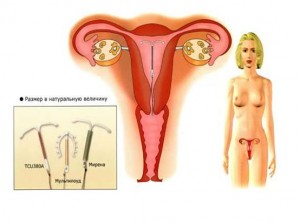 The main advantage of contraceptive coils is reliability.. Compared to other methods of contraception, this has the best percentage of safety (97%). If the spiral does not move from its place, you can be calm. Another plus- this is the possibility of long-term use of the spiral. You can put yourself a contraceptive spiral for five years and not think about anything! You will not need concomitant contraceptive drugs.
The main advantage of contraceptive coils is reliability.. Compared to other methods of contraception, this has the best percentage of safety (97%). If the spiral does not move from its place, you can be calm. Another plus- this is the possibility of long-term use of the spiral. You can put yourself a contraceptive spiral for five years and not think about anything! You will not need concomitant contraceptive drugs.
As they say, for every plus there is always a minus. The main disadvantage of the contraceptive spiral is the possibility of infection. The fact is that when a woman has a spiral, her uterus is in a half-open state.
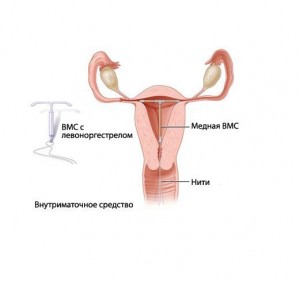 It is clear that the infection can at any time seep into the female body. Some women experience increased pain and discharge in the first months of using the contraceptive spiral. In any case, everything here is very individual.
It is clear that the infection can at any time seep into the female body. Some women experience increased pain and discharge in the first months of using the contraceptive spiral. In any case, everything here is very individual.
There are also cases when the contraceptive coil is slightly shifted. The whole catch is that a woman cannot always feel the shift. Thus, an unwanted pregnancy can occur. There is also a small risk of an ectopic pregnancy..
To avoid such "surprises", it is necessary to visit a gynecologist every three months. It is very important to be observed by a doctor and monitor the position of the spiral. Along with this, you will also check your women's health (presence of fungi, infections, etc.).
Keep in mind that this contraceptive is not suitable for every woman.. If you have cervical erosion, uterine displacement, fibroids or any other infection, the spiral is contraindicated for you.
So if you intend to put yourself a spiral, you need to contact a gynecologist and first pass all the necessary tests. No self-activity! If you do not have any contraindications, the gynecologist will select for you the most optimal version of the contraceptive spiral.
How much does a contraceptive coil cost?
The modern Russian market offers a large selection of a wide variety of contraceptive spirals. The cost of a spiral depends on the manufacturer, shape, material, etc. Of course, we do not recommend you save on your health! Try to give preference to well-known and long-established companies.
If we talk about the average price of the contraceptive spiral, then it can fluctuate from four hundred to seven hundred rubles. Given the service life of the coil (five years), it is not expensive at all! Other methods of contraception can cost you much more money.
It is best to choose a contraceptive spiral based on the material, quality and manufacturer. For example, Mirena cost a woman 7000-10000 rubles and it will last for five years. It is made from the most modern materials and contains a small amount of hormones that will protect a woman from inflammation.You can choose a spiral cheaper, for example, "Nova-T", which is worth about 2000 rubles, it has not only a pronounced anti-inflammatory effect, but is also made of an elastic material that does not injure the cervix when inserted.
Domestic-made spiral won great popularity "Junona Bio-E 380", its value does not exceed 200 rubles.
